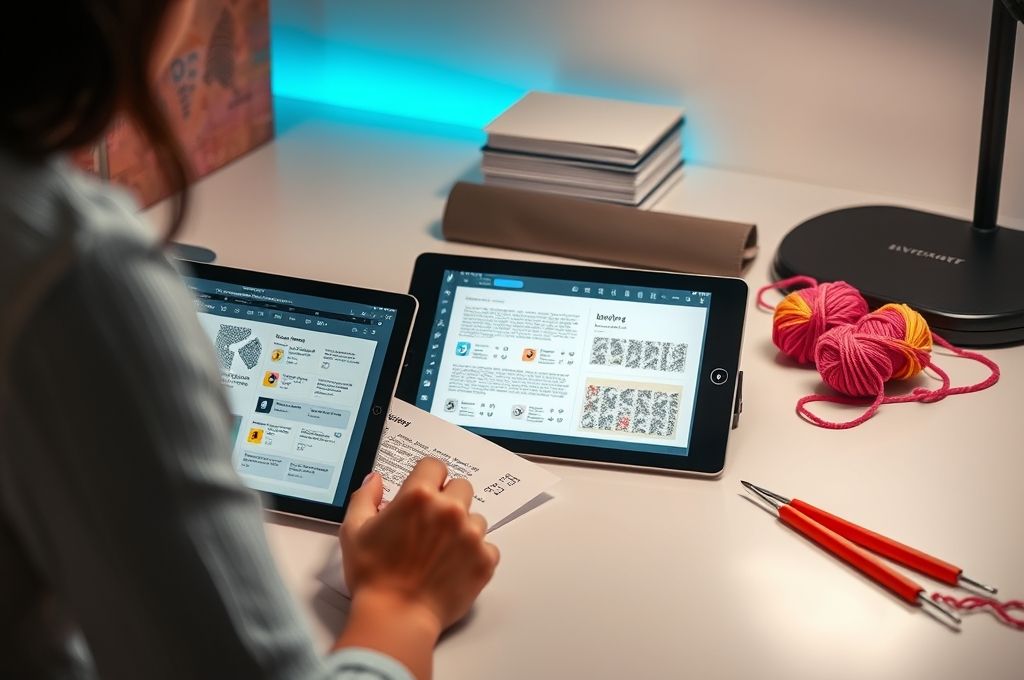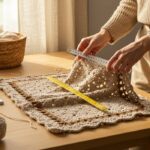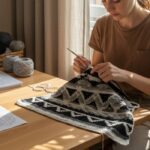Have you ever followed a crochet pattern step by step, only to end up with a lopsided hat or a sweater that somehow fits like a potato sack? You’re not alone. Even experienced crocheters know the frustration of unclear instructions, missing stitch counts, or mysterious abbreviations that leave you guessing. What if the problem isn’t your skill—but the pattern itself?
Welcome to the world of tech editing—a behind-the-scenes superhero in the crafting community. While most people focus on the creative side of designing beautiful crochet patterns, few realize how crucial accuracy and clarity are in turning a great idea into a usable, reliable design. Tech editing ensures that every stitch, row, and symbol in your pattern is correct, consistent, and easy to follow.
In this article, we’ll explore what tech editing really means for crochet patterns, why it matters more than ever in today’s digital crafting world, and how both designers and crafters can benefit from it. Whether you’re a designer looking to level up your patterns or a crocheter tired of confusing instructions, you’ll walk away with practical tips and insights to make your next project smoother, more enjoyable, and—most importantly—accurate.
Let’s unravel the yarn of tech editing and see how it can transform your crochet experience.
What Is Tech Editing, and Why Does It Matter?
At its core, tech editing (short for technical editing) is the process of reviewing a crochet pattern for accuracy, consistency, clarity, and adherence to industry standards. It’s not about creativity or design—it’s about making sure the instructions actually work.
Think of it like proofreading a recipe. You wouldn’t want to bake a cake using instructions that say “add three eggs” in one step and “two eggs” in another. The same goes for crochet. A single miscounted stitch or mislabeled repeat can throw off an entire project.
Tech editors don’t just check for math errors. They verify:
- Stitch counts at the end of each row or round
- Correct use of abbreviations and terminology
- Logical flow of instructions
- Consistency in formatting and layout
- Proper use of parentheses, brackets, and special symbols
And here’s the kicker: many popular patterns sold online have never been tech edited. That means thousands of crafters are spending time, money, and emotional energy on projects that could have been saved with a simple review.
A 2023 survey by the Craft Yarn Council found that over 60% of crocheters have abandoned a project due to confusing or incorrect instructions. That’s not just frustrating—it’s discouraging. And when crafters give up, it affects the entire handmade community.
So yes, tech editing matters. It protects your time, your yarn, and your love for the craft.
The Difference Between Tech Editing and Copyediting

It’s easy to confuse tech editing with copyediting—but they’re not the same thing. Understanding the difference can help you appreciate the value of each.
Copyediting focuses on grammar, spelling, punctuation, and sentence structure. A copyeditor makes sure your pattern reads smoothly and professionally. For example, they’d fix a sentence like:
“sc in next 3 st’s”
to the clearer:
“sc in next 3 sts.”
But here’s the catch: a copyeditor might not know that “sc” means single crochet in US terms—or that it means double crochet in UK terms. That’s where the tech editor comes in.
A tech editor is like a crochet detective. They:
- Know standard crochet terminology inside and out
- Can spot when a stitch count doesn’t add up
- Understand pattern structure (e.g., repeats, increases, decreases)
- Verify that the written instructions match the schematic or photo
For example, if a pattern says “increase evenly across 20 stitches,” a tech editor will calculate whether 5 increases (adding 5 stitches) makes sense—or if it should be 4 or 6. They’ll also check that the increase method (e.g., sc2tog vs. inc) is appropriate and clearly explained.
Bottom line:
Copyediting = language polish
Tech editing = technical precision
Both are essential for a professional-quality pattern. But if you had to choose one, tech editing should always come first. After all, what good is perfect grammar if the math is wrong?
Common Errors in Crochet Patterns (And How Tech Editors Catch Them)
Even the most talented designers make mistakes. Crochet patterns are complex—they involve math, spatial reasoning, and precise language. Here are some of the most common errors, and how tech editing catches them before they reach your hook.
1. Stitch Count Mismatches
One of the top complaints from crocheters is ending a row with the wrong number of stitches. This often happens when a designer forgets to account for increases or decreases in a repeat section.
Example:
A pattern says:
“Ch 2, dc in next 4 sts, (dc, ch 1, dc) in next st, repeat from * to end.”
But if the starting chain isn’t a multiple of 5 plus 2, the pattern won’t work.
A tech editor would flag this and suggest adjusting the foundation chain or clarifying the repeat.
2. Inconsistent Terminology
Using “tr” in one section and “treble” in another confuses readers. Tech editors standardize abbreviations and ensure they match the pattern’s designated style (US or UK).
3. Missing or Unclear Repeats
Patterns often use brackets or asterisks to indicate repeats. But if those symbols aren’t closed properly or the repeat range is ambiguous, crocheters get lost.
Tech editors verify that every “repeat from * to end” has a matching “*” and that the number of stitches worked in the repeat divides evenly into the total.
4. Schematic vs. Instructions Mismatch
Sometimes the photo or diagram shows a sleeve length of 18 inches, but the written instructions only create a 15-inch sleeve. A tech editor compares all elements to ensure alignment.
5. Formatting Issues
Poor spacing, inconsistent indentation, or lack of bold headers can make a pattern hard to follow. Tech editors ensure the layout supports readability—especially on mobile devices.
By catching these issues early, tech editors save designers from negative reviews and crocheters from project disasters.
The Tech Editor’s Toolkit: What Goes Into the Process
So, what does a tech editor actually do? It’s not just reading through a pattern once and saying “looks good.” The process is thorough, methodical, and often involves multiple passes.
Here’s a step-by-step look at a typical tech editing workflow:
1. First Pass – Read for Flow and Clarity
The editor reads the entire pattern from start to finish, noting any confusing language, awkward phrasing, or missing steps. This is about the experience of following the pattern.
2. Second Pass – Check Stitch Counts and Math
Using a spreadsheet or crochet calculator, the editor verifies every stitch count, increase, decrease, and repeat. They may even crochet a swatch (called test crocheting) to confirm the instructions work in practice.
3. Third Pass – Verify Formatting and Symbols
Parentheses, brackets, and asterisks must be properly paired. Numbering should be consistent. Headers should be clear. This pass ensures the pattern is visually organized.
4. Fourth Pass – Cross-Check with Visuals
The editor compares the written instructions to any photos, schematics, or charts. Do the stitch counts match the diagram? Does the finished size align with the gauge?
5. Final Review – Style and Standards
The editor ensures the pattern follows a recognized style guide (like the Craft Yarn Council’s standards) and uses consistent terminology. They also check for accessibility—like including both written and charted instructions when possible.
Many tech editors use tools like:
- Google Sheets or Excel for tracking stitch counts
- PDF markup software (like Adobe Acrobat) for commenting
- Crochet-specific style guides
- Gauge calculators and row counters
It’s detail-oriented work—but that’s exactly what makes it so valuable.
Why Every Designer Should Invest in Tech Editing
You might think, “I’ve been crocheting for years. I can check my own patterns.” And maybe you can. But here’s the truth: it’s nearly impossible to catch your own mistakes.
Our brains fill in gaps. We remember what we meant to write, not what we actually wrote. That’s why even experienced designers benefit from a fresh set of eyes.
Here’s why investing in tech editing is a smart move for any crochet designer:
1. Builds Credibility
A well-edited pattern shows professionalism. When crocheters see consistent formatting, clear instructions, and accurate stitch counts, they trust your work. This leads to better reviews, more sales, and a stronger reputation.
2. Reduces Customer Support
How many times have you emailed a designer asking, “Did you mean to repeat this 5 or 6 times?” Tech-edited patterns minimize these questions because they’re clear from the start. That means less time answering emails and more time designing.
3. Prevents Costly Re-Releases
Imagine selling 500 copies of a pattern—then discovering a critical error in row 12. You’ll need to issue a correction, apologize to customers, and possibly offer refunds. A $50 tech edit could have saved you hundreds in lost trust and time.
4. Supports Inclusivity
Clear, accurate patterns are more accessible to beginners, non-native English speakers, and people with learning differences. Tech editing helps remove barriers to entry in the crafting world.
5. Prepares for Publication
If you dream of publishing in magazines or pattern books, tech editing is non-negotiable. Most publishers require a tech edit certificate before accepting a submission.
In short: tech editing isn’t an expense—it’s an investment. It protects your brand, your audience, and your passion.
How to Find a Great Tech Editor (And What to Look For)
Not all tech editors are created equal. Just because someone crochets well doesn’t mean they can tech edit effectively. So how do you find the right one?
Here are key qualities to look for:
✅ Experience with Your Type of Patterns
A tech editor who specializes in amigurumi might not be the best fit for a complex lace shawl. Look for someone familiar with your niche.
✅ Knowledge of Industry Standards
They should know the difference between US and UK terms, understand standard abbreviations, and follow recognized style guides.
✅ Strong Communication Skills
A good tech editor doesn’t just mark up your document—they explain why they made changes. Look for clear, respectful feedback.
✅ Use of Tools and Systems
Ask if they use spreadsheets, checklists, or test crocheting. These tools show they’re thorough and organized.
✅ Positive Reviews or Testimonials
Check their website, Ravelry profile, or social media for feedback from other designers.
You can find tech editors through:
- Ravelry groups (like “Crochet Designers” or “Tech Editors”)
- Facebook communities (e.g., “Crochet Pattern Testers & Designers”)
- Marketplaces like Etsy or Fiverr (read reviews carefully)
- Professional directories like the Crochet Guild of America (CGOA)
Pro Tip: Always ask for a sample edit—a short section of your pattern they’ll edit for free or at a low cost. This lets you see their style and attention to detail before committing.
Can You Tech Edit Your Own Patterns? (Tips for DIY)
If hiring a tech editor isn’t in your budget, you can do a basic self-tech edit. It won’t replace a professional, but it can catch many common errors.
Here’s a DIY checklist:
🔹 Step 1: Walk Away First
Finish your pattern, then set it aside for 2–3 days. Coming back with fresh eyes helps you see mistakes.
🔹 Step 2: Print It Out
Reading on paper is different from reading on screen. Print your pattern and mark it up with a pen.
🔹 Step 3: Check Stitch Counts
Go row by row. Write down how many stitches you should have at the end of each line. Use a calculator if needed.
🔹 Step 4: Verify Repeats
Make sure every “repeat from * to end” has a matching “*”. Count how many stitches are in the repeat and confirm they divide evenly into the total.
🔹 Step 5: Read Aloud
Yes, out loud. This helps you catch awkward phrasing or missing words.
🔹 Step 6: Use a Style Guide
Follow a standard like the Craft Yarn Council’s Standard Yarn Weight System and Crochet & Knit Stitch Abbreviations.
🔹 Step 7: Get a Second Opinion
Ask a trusted crocheter friend to review it. Even if they don’t tech edit professionally, they might spot something you missed.
While this won’t be as thorough as a pro edit, it’s better than nothing—and it shows you care about quality.
The Ripple Effect: How Tech Editing Benefits the Entire Crochet Community
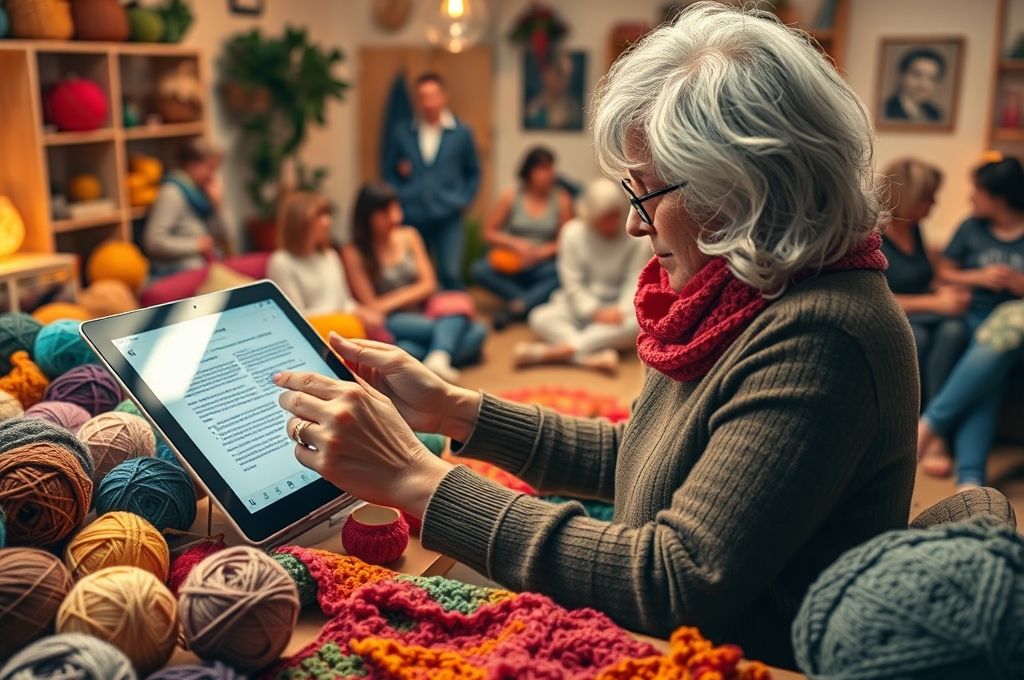
Tech editing doesn’t just help designers and individual crafters—it strengthens the entire handmade movement.
When patterns are accurate and easy to follow, more people succeed in their projects. And when people succeed, they keep crocheting. They share their work online, inspire others, and buy more yarn. It’s a positive cycle.
On the flip side, poorly written patterns can drive people away from the craft. A beginner who struggles with a confusing pattern might think, “I’m just not good at this,” when the real issue was unclear instructions.
Tech editing promotes:
- Confidence in crafters of all skill levels
- Trust in designers and the handmade market
- Longevity of the craft, as more people stick with it
And let’s not forget accessibility. Clear patterns with consistent formatting are easier to follow for people with visual impairments, dyslexia, or those using screen readers. Tech editing is a small step toward a more inclusive crafting world.
In a way, tech editors are the unsung heroes of the crochet community. They don’t get credit in the final photo, but their work ensures that thousands of handmade items are created exactly as intended.
Real-Life Impact: A Story of What Happened After a Tech Edit
Let’s look at a real example.
Sarah, a crochet designer, released her first sweater pattern on Etsy. She tested it herself and thought it was perfect. But within days, she started getting messages:
“I’m stuck on row 8—the stitch count doesn’t match.” “The sleeves are way too long. Did I do something wrong?”
She panicked. Over 30 customers had bought the pattern. She spent days answering emails, issuing corrections, and feeling embarrassed.
Then she hired a tech editor.
The editor found:
- 7 stitch count errors
- Inconsistent use of “sc” and “single crochet”
- A missing repeat instruction in the body section
- Schematic didn’t match the written length
Sarah updated the pattern, apologized to customers, and re-released it—with a note that it had been tech edited.
The result?
Sales increased by 40% in the next month. Reviews improved. And she received messages like:
“This is the clearest sweater pattern I’ve ever used!”
That one edit transformed her reputation and her business.
Final Thoughts: Accuracy Is an Act of Respect
At its heart, tech editing isn’t just about correctness—it’s about respect. Respect for the crocheter’s time, money, and effort. Respect for the craft itself. And respect for the joy that comes from creating something beautiful with your own hands.
When you take the time to ensure your pattern is accurate, you’re saying:
“I value you. I want your project to succeed. I care about your experience.”
Whether you’re a designer or a crocheter, you can advocate for better patterns. Designers—consider investing in a tech edit. Crocheters—support designers who do. Leave kind, constructive feedback when you find errors, and celebrate those who get it right.
The handmade world thrives when we lift each other up. And sometimes, the smallest stitch in the pattern makes the biggest difference.
Conclusion
We’ve covered a lot—from what tech editing is, to how it works, to why it’s essential for every crochet pattern. We’ve seen how a simple stitch count error can derail a project, and how a skilled tech editor can prevent that.
The truth is, crochet is both an art and a science. The beauty of a finished piece comes not just from creativity, but from precision. And tech editing is the bridge between the two.
Whether you’re designing your first pattern or following your hundredth, remember that clarity and accuracy matter. They save time, reduce frustration, and keep people coming back to the craft they love.
So next time you pick up your hook, take a moment to appreciate the invisible work behind the scenes—the careful counting, the double-checked repeats, the clear instructions that make your project possible.
And if you’re a designer? Consider this your gentle nudge to hire a tech editor. Your future self—and your customers—will thank you.
Now, we’d love to hear from you:
Have you ever followed a pattern that had a confusing error? Or have you seen a difference after a pattern was tech edited? Share your story in the comments below—let’s keep the conversation going!
Happy crocheting! 🪝🧶
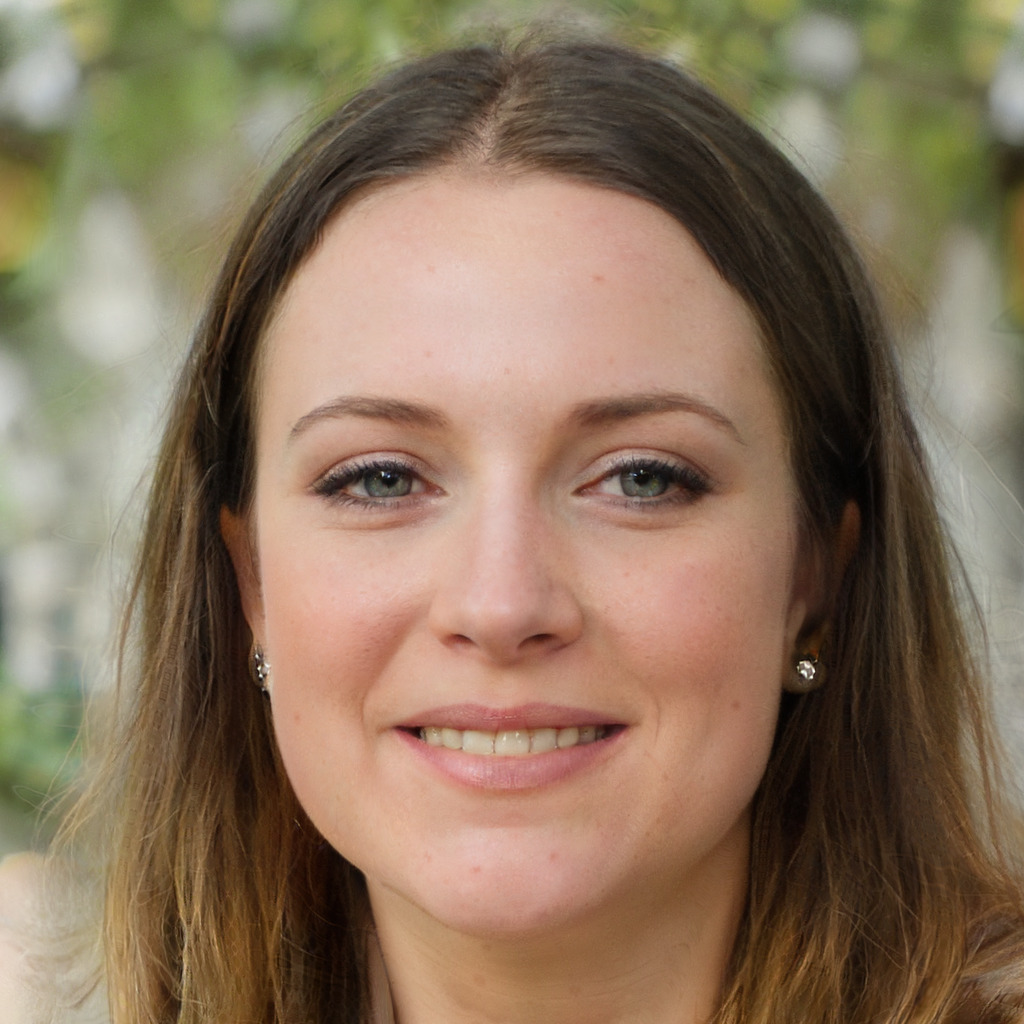
Daniele Ferreira is passionate about the world of crochet, dedicating her time to exploring techniques, creating unique pieces, and sharing her knowledge with beginners and aficionados alike. With attention to detail and creativity, she transforms yarn into true works of art, inspiring others to discover the beauty and joy of this manual art.

